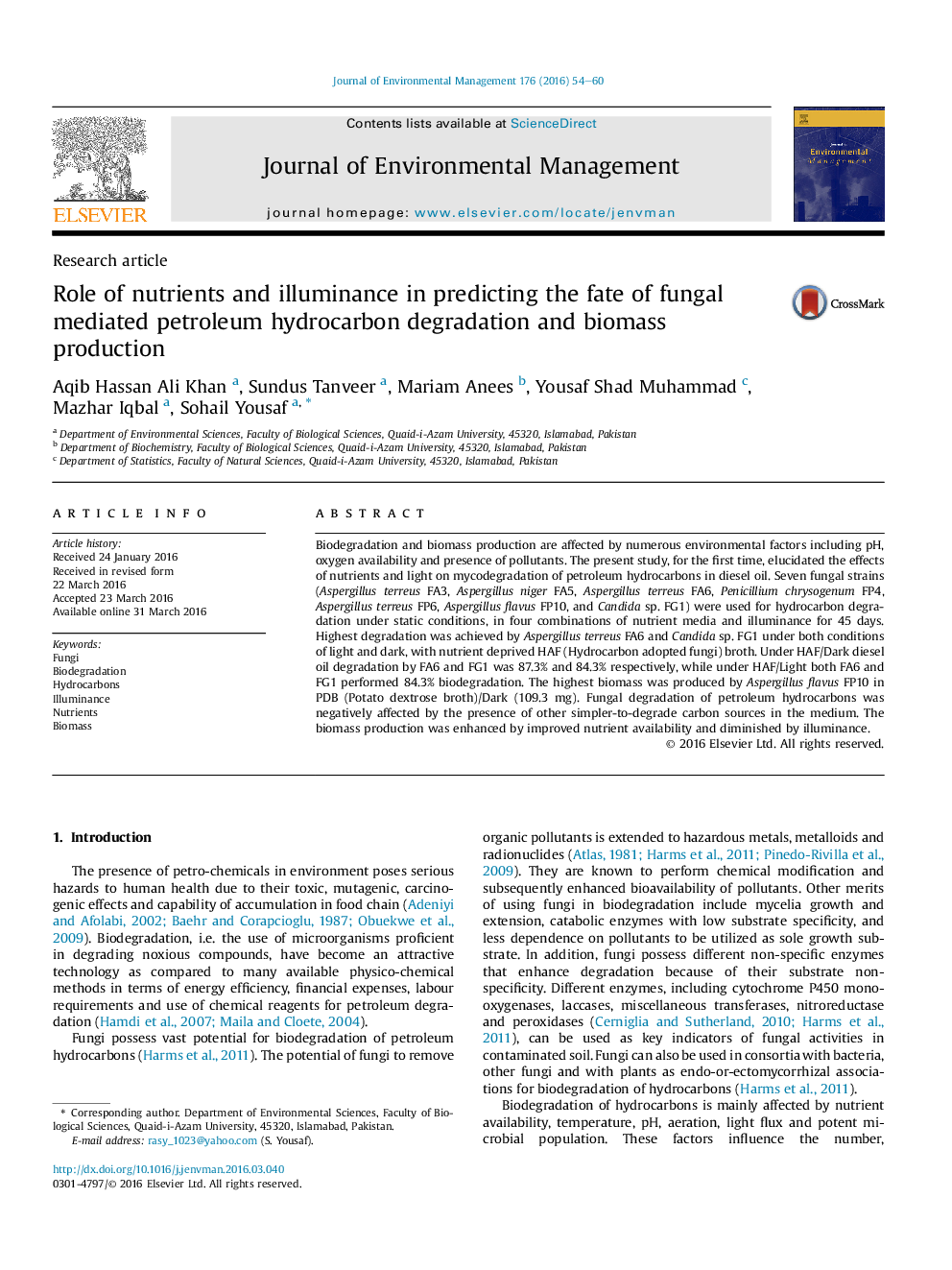| Article ID | Journal | Published Year | Pages | File Type |
|---|---|---|---|---|
| 1055327 | Journal of Environmental Management | 2016 | 7 Pages |
•It is first study on light and nutrients effects' on fungal degradation and biomass.•Aspergillus, Penicillium, and Candida strains were best in diesel degradation.•Light negatively affect the fungal biomass production.•Presence of nutrients reduced hydrocarbon degradation by selected fungal strains.
Biodegradation and biomass production are affected by numerous environmental factors including pH, oxygen availability and presence of pollutants. The present study, for the first time, elucidated the effects of nutrients and light on mycodegradation of petroleum hydrocarbons in diesel oil. Seven fungal strains (Aspergillus terreus FA3, Aspergillus niger FA5, Aspergillus terreus FA6, Penicillium chrysogenum FP4, Aspergillus terreus FP6, Aspergillus flavus FP10, and Candida sp. FG1) were used for hydrocarbon degradation under static conditions, in four combinations of nutrient media and illuminance for 45 days. Highest degradation was achieved by Aspergillus terreus FA6 and Candida sp. FG1 under both conditions of light and dark, with nutrient deprived HAF (Hydrocarbon adopted fungi) broth. Under HAF/Dark diesel oil degradation by FA6 and FG1 was 87.3% and 84.3% respectively, while under HAF/Light both FA6 and FG1 performed 84.3% biodegradation. The highest biomass was produced by Aspergillus flavus FP10 in PDB (Potato dextrose broth)/Dark (109.3 mg). Fungal degradation of petroleum hydrocarbons was negatively affected by the presence of other simpler-to-degrade carbon sources in the medium. The biomass production was enhanced by improved nutrient availability and diminished by illuminance.
